|
#2
28th July 2014, 02:30 PM
| |||
| |||
| Re: UGC NET June Computer Science Study material
Here I am giving you syllabus for National eligibility test of University Grants Commission in a PDF file attached with it so you can get it easily. UGC NET CS Paper II : 1. Discrete Structures: Sets, Relations, Functions. Pigeonhole Principle, Inclusion-Exclusion Principle, Equivalence and Partial Orderings, Elementary Counting Techniques, Probability. Measure ( s ) for information and Mutual information. Computability : Models of computation-Finite Automata, Pushdown Automata, Non – determinism and NFA, DPDA and PDAs and Languages accepted by these structures. Grammars, Languages, Non – computability and Examples of non – computable problems. Graph : Definition, walks, paths, trails, connected graphs, regular and bipartite graphs, cycles and circuits. Tree and rooted tree. Spanning trees. Eccentricity of a vertex radius and diameter of a graph. Central Graphs. Centres of a tree. Hamiltonian and Eulerian graphs, Planar graphs. Groups : Finite fields and Error correcting / detecting codes. 2. Computer Arithmetic : Propositional ( Boolean ) Logic, Predicate Logic, Well – formed – formulae ( WFF ), Satisfiability and Tautology. Logic Families : TTL, ECL and C – MOS gates. Boolean algebra and Minimization of Boolean functions. Flip-flops – types, race condition and comparison. Design of combinational and sequential circuits. Representation of Integers : Octal, Hex, Decimal, and Binary. 2′s complement and 1′s complement arithmetic. Floating point representation. 3. Programming in C and C++ : Programming in C : Elements of C – Tokens, identifiers, data types in C. Control structures in C. Sequence, selection and iteration(s). Structured data types in C-arrays, struct, union, string, and pointers. O – O Programming Concepts : Class, object, instantiation. Inheritance, polymorphism and overloading. C++ Programming : Elements of C++ – Tokens, identifiers. Variables and constants, Datatypes, Operators, Control statements. Functions parameter passing. Class and objects. Constructors and destructors. Overloading, Inheritance, Templates, Exception handling. 4. Relational Database Design and SQL : E-R diagrams and their transformation to relational design, normalization – INF, 2NF, 3NF, BCNF and 4NF. Limitations of 4NF and BCNF. SQL : Data Definition Language ( DDL ), Data Manipulation Language ( DML ), Data Control Language ( DCL ) commands. Database objects like-Views, indexes, sequences, synonyms, data dictionary. 5. Data and File structures : Data, Information, Definition of data structure. Arrays, stacks, queues, linked lists, trees, graphs, priority queues and heaps. File Structures : Fields, records and files. Sequential, direct, index-sequential and relative files. Hashing, inverted lists and multi – lists. B trees and B+ trees. 6. Computer Networks : Network fundamentals : Local Area Networks ( LAN ), Metropolitan Area Networks ( MAN ), Wide Area Networks ( WAN ), Wireless Networks, Inter Networks. Reference Models : The OSI model, TCP / IP model. Data Communication : Channel capacity. Transmission media-twisted pair, coaxial cables, fibre – optic cables, wireless transmission-radio, microwave, infrared and millimeter waves. Lightwave transmission. Thelephones – local loop, trunks, multiplexing, switching, narrowband ISDN, broadband ISDN, ATM, High speed LANS. Cellular Radio. Communication satellites-geosynchronous and low-orbit. 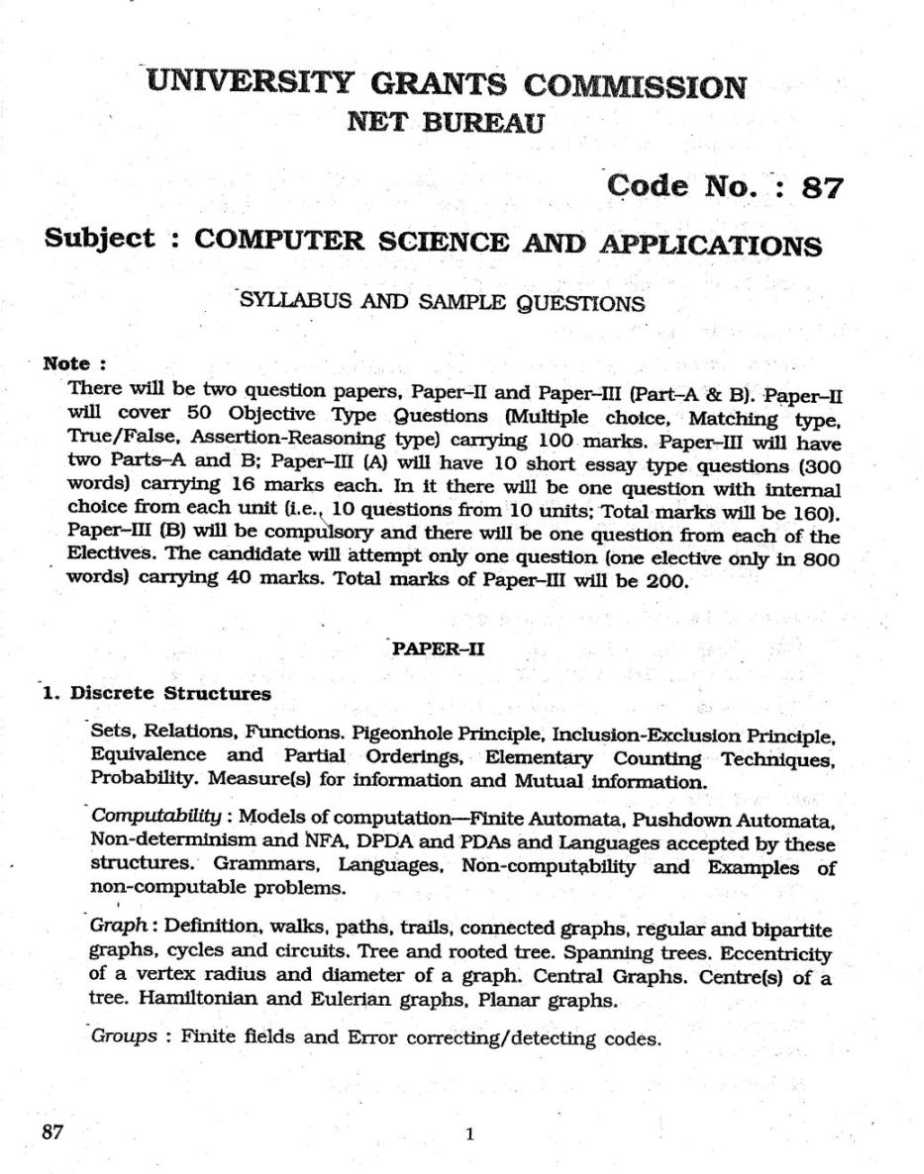 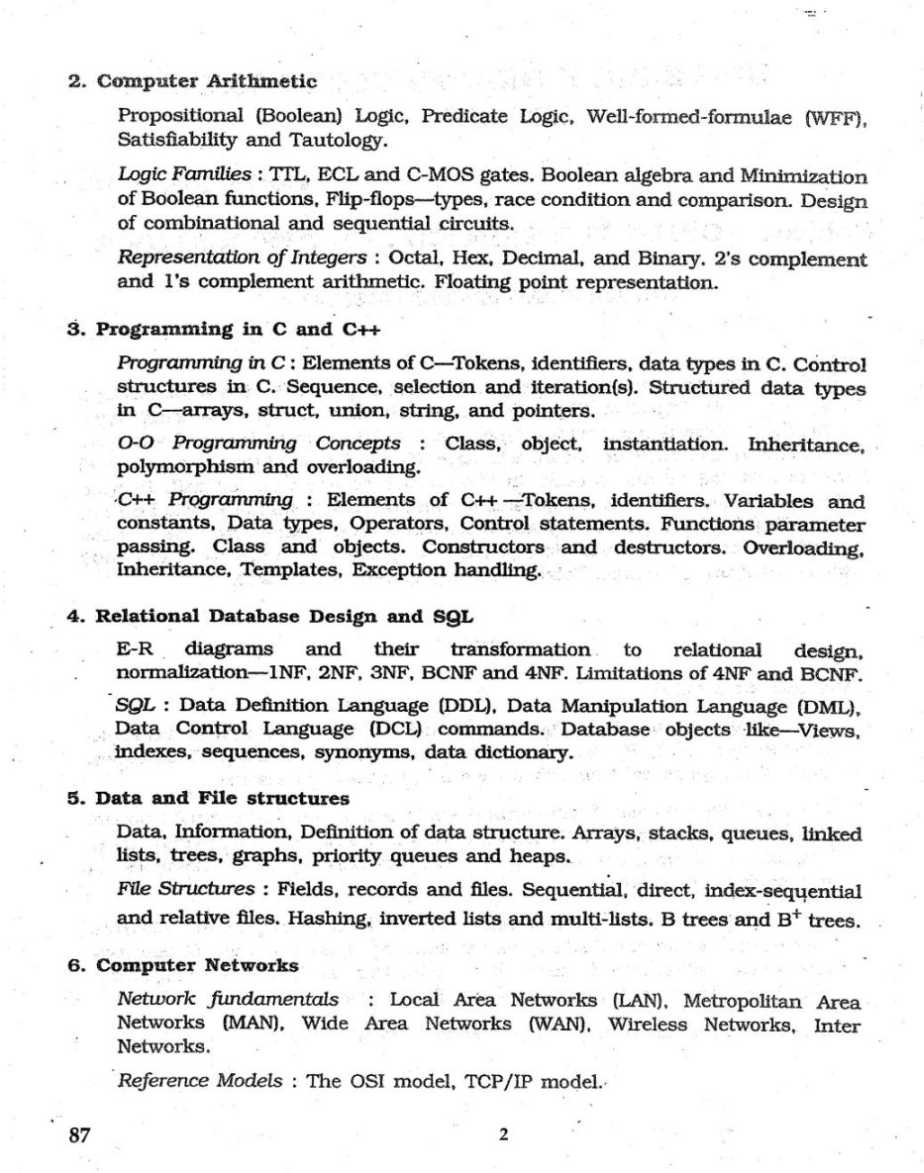 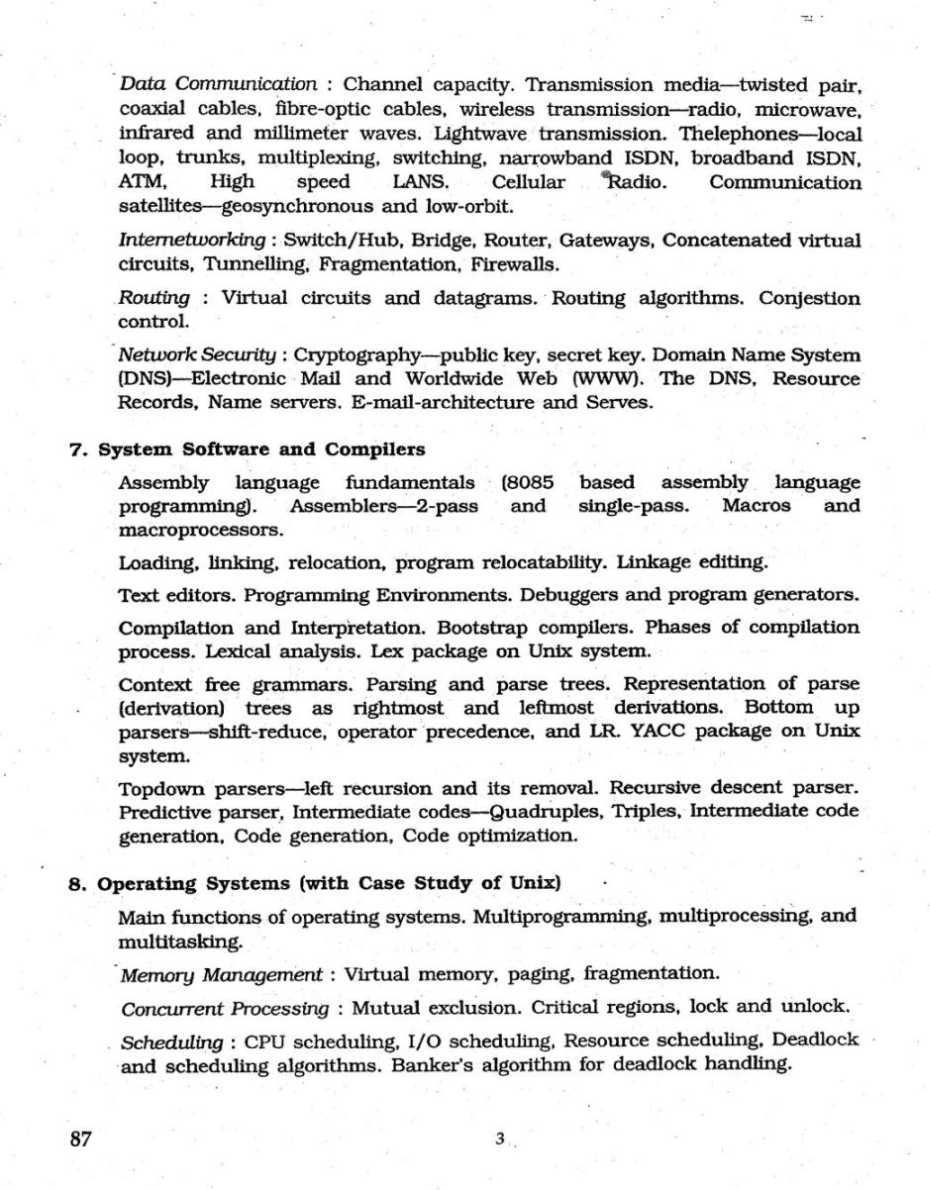 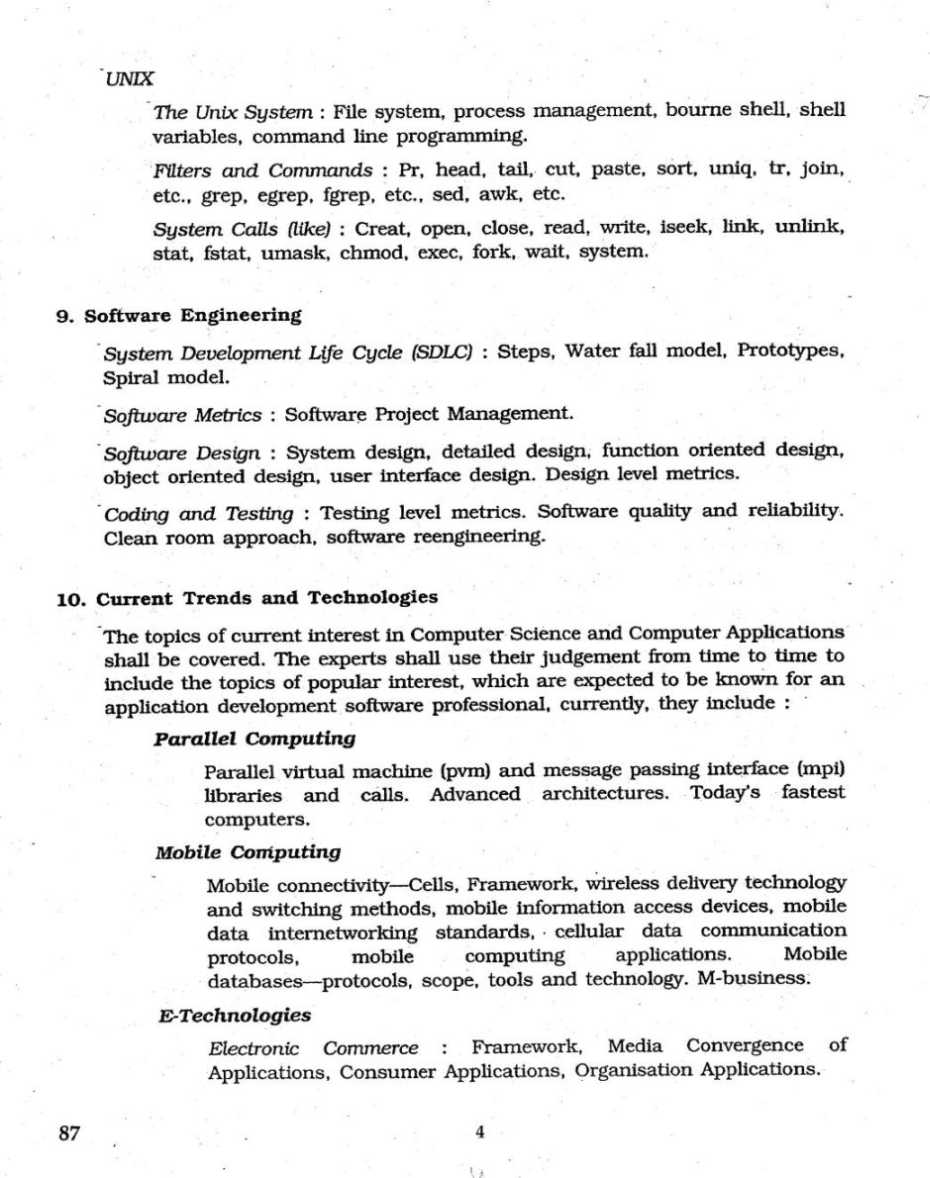 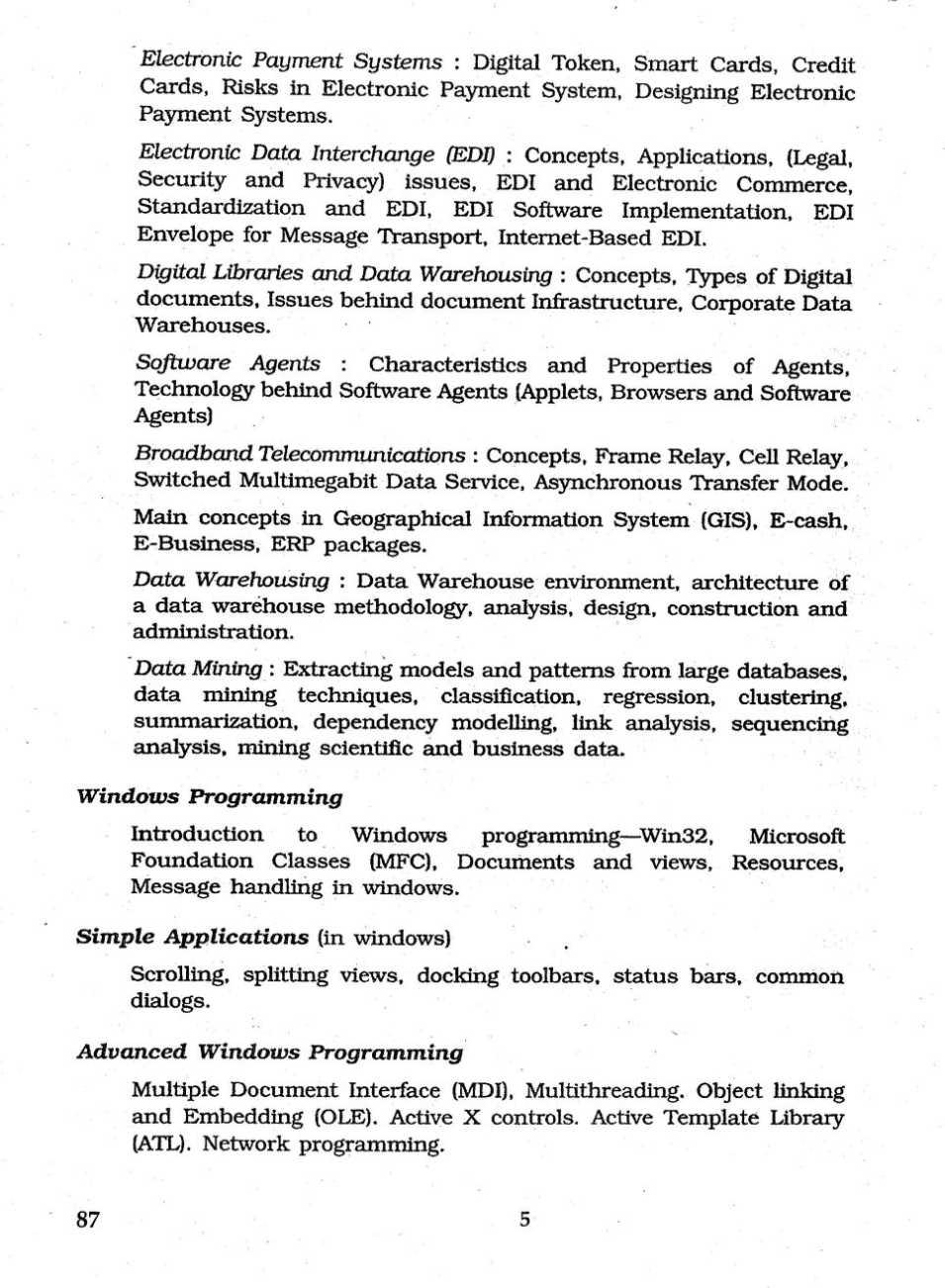 |